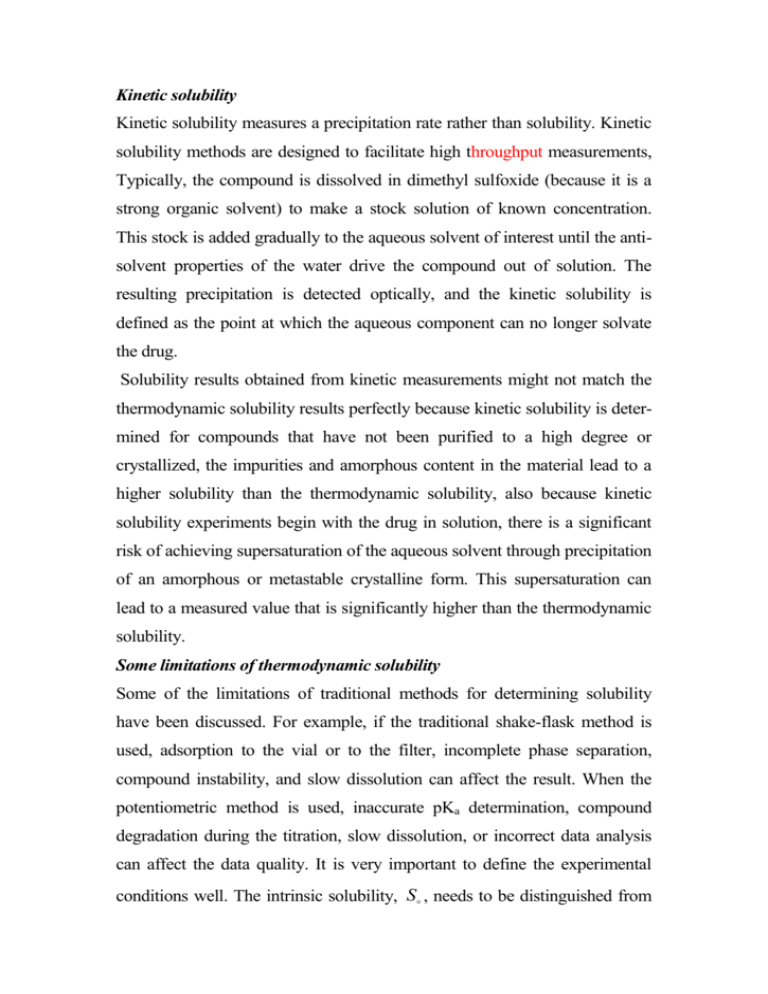Kinetic solubility Kinetic solubility measures a precipitation rate
advertisement

Kinetic solubility Kinetic solubility measures a precipitation rate rather than solubility. Kinetic solubility methods are designed to facilitate high throughput measurements, Typically, the compound is dissolved in dimethyl sulfoxide (because it is a strong organic solvent) to make a stock solution of known concentration. This stock is added gradually to the aqueous solvent of interest until the antisolvent properties of the water drive the compound out of solution. The resulting precipitation is detected optically, and the kinetic solubility is defined as the point at which the aqueous component can no longer solvate the drug. Solubility results obtained from kinetic measurements might not match the thermodynamic solubility results perfectly because kinetic solubility is determined for compounds that have not been purified to a high degree or crystallized, the impurities and amorphous content in the material lead to a higher solubility than the thermodynamic solubility, also because kinetic solubility experiments begin with the drug in solution, there is a significant risk of achieving supersaturation of the aqueous solvent through precipitation of an amorphous or metastable crystalline form. This supersaturation can lead to a measured value that is significantly higher than the thermodynamic solubility. Some limitations of thermodynamic solubility Some of the limitations of traditional methods for determining solubility have been discussed. For example, if the traditional shake-flask method is used, adsorption to the vial or to the filter, incomplete phase separation, compound instability, and slow dissolution can affect the result. When the potentiometric method is used, inaccurate pKa determination, compound degradation during the titration, slow dissolution, or incorrect data analysis can affect the data quality. It is very important to define the experimental conditions well. The intrinsic solubility, S , needs to be distinguished from the solubility measured at a given pH value in a defined medium. Intrinsic solubility refers to the solubility of the unionized species.. Finally, it is important to note that single pH measurements cannot distinguish between soluble monomers and soluble aggregates of drug molecules, which may range from dimers to micelles unless more sophisticated experiments are performed. Computational approaches In addition to measuring solubility, computational approaches are widely used where fragment-based models are used to attempt to predict solubility as a sum of substructure contributions such as contributions of atoms, bonds, or larger substructures. This approach is based on a general assumption that molecule properties are determined completely by molecular structure and may be approximated by the contributions of fragments in the molecule. The inverse relation between solubility and lipophilicity has also been recognized for a long time and empirical relationships between log S and log P have been reported. Finally, numerous other approaches for predicting water solubility have been reported. The polar surface area, which characterizes molecule polarity and hydrogen bonding features, is one of the most useful descriptors. Polar surface area, defined as a sum of surfaces of polar atoms.




